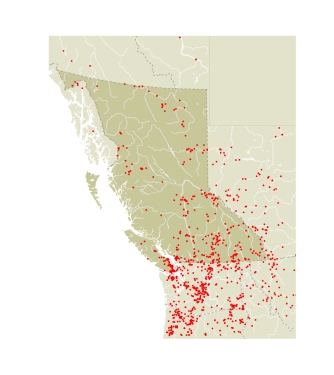Green Commas are univoltine. In southern BC adults that hibernate lay eggs on birch or willow in April and May. Oviposition on birch sometimes occurs in small sunlit patches within moderately dense forest (CSG). These eggs hatch within in a week or so, and the next generation of adults emerges in July. These adults do not reproduce immediately, but hibernate instead. Adults feed on poplar sap in the fall, and sap from broken willow branches in early spring (CSG; JHS). Adults hibernate regularly in woodpiles near Prince George (Jack McGhee, pers. comm.), debris piles, crawl spaces, barns, hollow trees and stumps, and other similar sheltered areas.
Larval foodplants in BC include paper birch, mountain alder, green alder, and willow (Harvey 1908; Sugden, 1970; CSG; FIS). Outside BC additional foodplants include Betula lenta, Ribes inerme, Salix humilus, S. bebbiana, and Rhododendron occidentale (Edwards 1868-72, 1884; Scudder 1889a; Caulfield 1875; Ferris and Brown 1981; Scott 1992).
|
|
